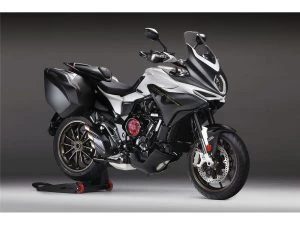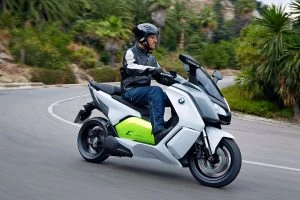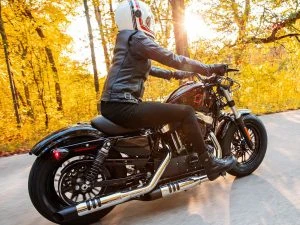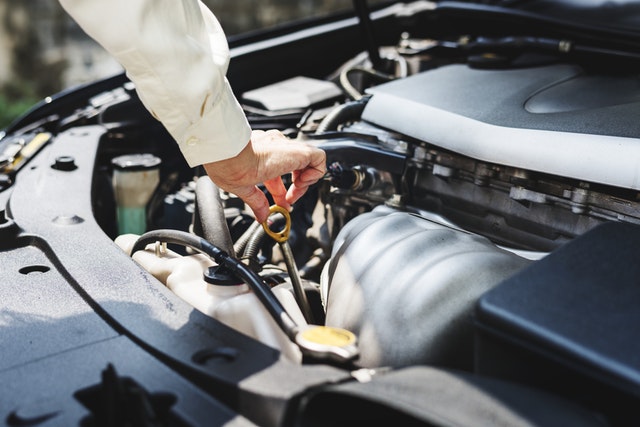Archive for February, 2022
Hydrogen V8 ICE

Exciting news for internal combustion engine (ICE) lovers: Toyota, Mazda, Subaru and Kawasaki are wanting to collaborate on the attempt to keep the combustion engine alive while meeting all the global clean air targets. Not only that, but Toyota and long-time Japanese engineering partner Yamaha are at work developing a special new hydrogen-powered 5.0-litre V8 engine. Unlike a hydrogen fuel-cell car, which combines hydrogen and oxygen atoms to create electricity to drive a motor, this new hydrogen V8 internal combustion engine is a conventional piston-driven engine that has been tuned to burn hydrogen instead of petrol.
While this newly developed V8 engine isn’t completely new, the way it’s fuelled is. It’s a 5.0-litre naturally aspirated V8 that is based off the engine that has been used in the Lexus RC F coupe. Yamaha says that it produces around 335 kW of power at 6800 rpm and 540 Nm of torque at 3600 rpm. Having modified the injectors, the head, the intake manifolds and other engine components, this work has added up to make the engine environmentally friendly. The hydrogen-fed ICE has become less powerful than the petrol-fed V8 that the hydrogen engine is based on. In the Lexus RC F coupe, the petrol V8 puts out 472 kW and 536 Nm of torque, so while torque has increased a little, power has dropped considerably. That said, 331 kW is still a stonking amount of power to enjoy, and more often than not it is the torque that you really want in the real world conditions. You also still get the sound of a burbling V8, and what’s not to like about that!
Yamaha engineer, Takeshi Yamada, said that the engine has a different character to a conventional petrol motor. He stated that hydrogen engines provide a friendlier feel, making them easier to use even without having utilize other electronic aids for the drive.
Toyota is clearly committed to the project of providing ICE powerplants that use hydrogen as the fuel. Given that Toyota has run a hydrogen-powered Toyota Corolla in Japan’s Super Taikyu race series as well as showcasing a hydrogen-powered Toyota Yaris GR prototype with the same hydrogen engine technology, it is obvious that they want to continue with this new breed of ICE.
One of the beauties about burning hydrogen instead of petrol is that the hydrogen powerplant does not produce carbon dioxide, which is considered to be one of the primary contributors to global warming. There would also be no significant nitrogen oxides emissions from an ICE designed to burn hydrogen, thanks to the selective catalytic reduction technology used in the aftertreatment of the combustion gases.
“Hydrogen engines house the potential to be carbon-neutral while keeping our passion for the internal combustion engine alive at the same time,” Yamaha Motor president Yoshihiro Hidaka said. He also added that: “I started to see that engines using only hydrogen for fuel actually had very fun, easy-to-use performance characteristics”.
While hydrogen is plentiful in the universe, it must be separated from other compounds to be used as fuel. Up to the year 2020, most hydrogen was produced from fossil fuels, resulting in CO2 emissions. Hydrogen obtained from fossil fuels is often referred to as grey hydrogen, when emissions are released into the atmosphere. Blue hydrogen is the hydrogen produced from fossil fuels when emissions are captured through carbon capture and storage (CCS).
Hydrogen that is produced from fossil fuels using the newer non-polluting technology called methane pyrolysis is often called turquoise hydrogen.
You can also generate hydrogen from renewable energy sources, and this hydrogen is often referred to as green hydrogen. There are two practical ways of producing green hydrogen. One of the ways is to use electric power for producing hydrogen from the electrolysis of water. The other way of producing green hydrogen is to use landfill gas to produce the green hydrogen in a steam reformer. Hydrogen fuel, when it is produced by using renewable sources of energy like wind or solar power, is a renewable fuel.
Hydrogen can also be created from another renewable energy source called nuclear energy via electrolysis, and this is sometimes seen as a subset of green hydrogen, but it can also be referred to as being pink hydrogen.
Obviously, when a car can be designed to run on hydrogen that has been produced from renewable energy sources, then this is a good thing. Toyota and Yamaha remain adamant that this is great technology which could carve out a niche for itself in the new EV automotive landscape.
Toyota has also recently revealed a fleet of 12 zero tailpipe-emission concept vehicles, many of which will reach production in the coming years.
This is all good news stuff, especially for those of us who love the sound of an ICE instead of a silent EV. The noisy farts always get the best round of laughter!
Decoding the Differences Behind a Name
If you’re on the lookout for a new car, you may have noticed that not all cars with the same name are equal. It goes without saying that some are cheaper than others. What’s behind this difference? Well, manufacturers often produce different “variants” within a model range.
This is a way of increasing a brand’s sales potential across a particular model. Usually, there are three main variants, but this has changed in recent times amid the greater emphasis on SUVs. Notably, this excludes other variables like body type (sedan versus station wagon), or short wheelbase versus long wheelbase. However, these variants often come with different levels of amenity and luxury. Usually, the differences are indicated by a set of letters or numbers, sometimes a particular badge or sub-name may be incorporated into the fold.
When it comes down to the differences, most of it boils down to variations either under the bonnet or inside the cabin. Occasionally, the high-end variants also boast some exterior touches that make it look a bit different from the others. Now, if you are on the hunt for a new car, the difference between the variants usually means different prices – potentially pushing out of reach your dream car.

So what sorts of things usually make up the difference between entry-level and top-spec variants? Here are a handful of differences that you can expect:
- The interior trim: The entry-level variants usually have a cloth finish whereas the top-tier variants usually incorporate leather, suede or a better quality of cloth.
- Features and technology: The top-spec variants usually have a few more gadgets and conveniences (e.g. electrically adjustable mirrors, adaptive cruise control) that the more affordable variants miss out on. This is a big consideration, and this is one of the main ways that variants differ.
- Engine: Often, the more powerful engines are reserved for the more premium variants. While a high-end variant warrants top performance, the good news is that entry-level variants are typically more frugal when it comes to fuel costs.
- Safety: And lastly, while progress is certainly being made in this area, there is sometimes still a difference in terms of safety features between the variants in a line-up. This isn’t to say that the entry-level variants are unsafe, but they may have fewer airbags or fewer active safety features.
Ultimately, do your homework so you know what you are bargaining for. If safety or performance or features are important to you, and the premium variants offer better options in this regard, you might have to stretch your budget a little further to ensure you walk away with a car you’ll love forever.
Motorcycles

There are those of us who just don’t do motorcycles. The thought of hurtling along the motorway with a massive engine between your legs sounds downright alarming to many people, and I get that. Considering that a motorcyclist does have less protection than most road users does put a lot of people off riding a motorcycle. However, a careful and skilful rider can manage the risks and keep well out of harm’s way.
Maybe you already ride a motorbike. You might even be wondering about getting your motorcycle license. If you haven’t experienced riding a motorcycle, then the chances are you’ll enjoy the thrill of riding a motorbike safely. Safely being the important word. Once you’ve mastered the skill of riding a motorbike safely, travelling about Australia on two wheels instead of four can be a fun and exciting experience you’ll enjoy for years to come. Out in the open, taking in the sights and smells, experiencing the elements, being one with the machine as you lean through the corners and feel the response are all reasons why many people love riding motorcycles.
As a tool to combat rising fuel prices, the motorbike could be a useful option. Whether you’re single or married, the motorbike can combine with your other means of transportation to get you where you need to go. They use a lot less fuel than a car and have the size (or lack of size) that enables them to slip through congested areas and park in tight spaces. If emissions are an issue for you, then the motorbike generates less of an environmental impact than a car does.
Even with the recent global health concerns and restrictions on our daily lives, over the last couple of years the motorcycle has enjoyed an increase in sales throughout Australia. Over the 2020 period, new motorcycle and scooter sales in Australia were up 6.2% from the previous year, showing a strong demand for individual mobility transport options, of which the motorcycle is the best. And throughout 2021, the growth trend mushroomed with an increase of 16.6%. That equated to a total of 102 new units sold, the highest level for 15 years.
Honda, Yamaha, and Kawasaki claim the biggest chunks of the market share, while Suzuki, KTM, BMW, and Harley Davidson deliver strong motorbike sales. All motorcycle manufacturers have enjoyed the stronger consumer demand for motorbikes, resulting in better sales figures.
Many people find motorcycle riding a relatively easy task but riding out on the road still comes with a fair share of risk. Lack of experience and recklessness are often key areas associated with motorcycle accidents. Damp and slippery roads need to be recognized and ridden over with care.
Allowing plenty of space between you and other road users is a must, and as you ride be aware of other people’s actions, intersection dynamics, any oncoming cars, and any car (whether moving or stationary) in front of you as you ride. If you are reading the other road users well, reading the road conditions right, and keeping your distance, then motorcycling is relatively safe.
There are plenty of nice sport bikes out there like the Buell Hammerhead, Ducati V4 or the Yamaha YZF-R7. These are great bikes for a fast ride over a short distance. They can make useful commute bikes as well.

Buell Sportbike
The touring bikes and dual purpose-bikes are better set up for a comfortable seat and long distance ergonomics. These are swift bikes and can handle two-up and luggage no problems. They also make a decent commuter. Bikes like the Triumph Tiger 1200, MV Augusta Turismo, KTM 1290, Kawasaki Versys, Honda CB500X and BMW 1600 GT are great options in this class of bike. They are a heavy bike, so not ideal for learners and the inexperienced.

MV Augusta Turismo
Scooters and smaller bikes like the Honda Navi, BMW CE O4 Electric Scooter, and Honda CB300 are handy inner-city commuters and great or a learner rider.

BMW Electric Scooter
A Roadster like the Harley Davidson Street Glide ST, Harley Davidson Forty-Eight, Indian Chief, and Triumph Bonneville Bobber are all about the wow factor and looks. These are sexy bikes, but some people also find their relatively relaxed riding position, which includes arms and legs pointing forwards, nice for cruising on longer rides.

Harley Davidson Forty-Eight
Getting More Life out of your Car
Whether you’ve just picked up a brand new car, or you’re looking to preserve the resell value for a car that you may trade-in at some point in the future, it’s always wise to extend the life of your car.
However, with daily events that take place in our lives, this issue often falls behind more immediate and pressing matters. As the potential resell value on your car can have a notable impact on future financing options available, consider these five tips to extend the life of your car.

Maintain a regular service schedule
Your car should always be maintained in accordance with the service schedule prescribed by the manufacturer – typically, the earlier between every 10,000km or every 6 months. Some auto-makers have longer servicing intervals, which are effectively double those mentioned. Servicing your car at the appropriate intervals addresses standard maintenance issues concerning fluids and filters, which are swapped out.
Furthermore, it’s also a proactive measure to get on top of potential mechanical issues before they arise by identifying any concerns. Keeping a service logbook is also indicative to future buyers that you have maintained the car well, meaning you can preserve value.
Refrain from repeat, short trips
Although you may think that short trips don’t contribute much in the way of wear on an engine, it is the oil, ignition and muffler systems that come under particular stress from the higher incidence of ‘start ups’.
Make sure you change your oil more frequently if you perform lots of short trips. Ignition related wear arises from certain components being more relied upon when activated, while the muffler comes under wear when it doesn’t heat up enough to cause condensation to evaporate, which is a potential cause of rust.

Maintain adequate tyre pressure
It’s one thing to ensure that your wheels are aligned and rotated correctly, but if your tyres are not operating at an adequate pressure level, there may be an additional burden on the tyres themselves.
This means they are more likely to need earlier replacement. At the same time, you’ll also consume a larger level of fuel. It’s not only under-inflation you need to worry about – over-inflation can lead to a loss of grip on the road. Finally, make sure tread depth is within the parameters of the law.
Watch your brakes
One of the most critical systems of your car, the brake system extends beyond the pads to also include the rotors, callipers and sensors. Ensure that these parts are in good order, seeing as their wear, or failure, can increase the risk of an accident. Look for any signs of corrosion or rust, which may serve as early warning signs.
Make your next car electric
A growing number of motorists are opting for the next-gen format of vehicles, be it hybrid or fully-electric vehicles. While these cars are prone to repairs themselves, as you would expect from any car, the signs are certainly promising that electric vehicles will have a long life due to not being vulnerable to engine issues.
You can expect an EV to last as long as the battery does, and now there is a wealth of information suggesting this could be as long as your internal combustion car, if not much longer.